All details about non-residential premises: definition, characteristics, differences from residential real estate, types and purposes of use
With the development of market relations, the concept of “non-residential premises” has become widely used in real estate transactions. However, in Russian legislation there is no clear definition of this concept. In this regard, citizens have many difficulties and questions.
This problem is especially of concern to merchants who want to convert residential real estate into non-residential real estate for business purposes..
This question also often arises for residents of apartment buildings, who confuse common property with non-residential premises when calculating utility bills.
Unfortunately, confusion in the concepts of residential and non-residential premises often leads to illegal real estate transactions and legal disputes.
What are non-residential premises

- The boundaries of the object are the floor, ceiling and walls with the obligatory presence of an entrance.
- In addition, non-residential premises must be part of the building, which determines its immovable nature and connection to the land plot.
- It must also belong to the non-residential fund and can be located in both residential and non-residential buildings.
 The main difference between non-residential premises and residential premises is that it is not intended for permanent residence of citizens and can only be used for public, administrative, commercial and other purposes.
The main difference between non-residential premises and residential premises is that it is not intended for permanent residence of citizens and can only be used for public, administrative, commercial and other purposes.
Residents of apartment buildings sometimes confuse common property with non-residential premises. You should know that the entrance, stairwells, elevator, attic and basement are common areas.
Non-residential premises in apartment buildings are usually cafes, shops, offices and other objects that meet this status. Such premises have owners and a certificate of ownership must be issued for them.

- the room is provided with a separate entrance (its access from a window opening is allowed);
- absence of registered persons in the premises;
- lack of rights to the premises of third parties;
- the object is not part of the residential premises.
Often, non-residential premises are located on the ground floors, attics and basements of apartment buildings. In these cases, residents of houses are faced with the fact that access to engineering equipment and general building communications is closed by the owners of non-residential premises. It can also be difficult to improve the local area of an apartment building.
This situation threatens the very residence in the house, causes a large number of disputes and is resolved only in court.
Features of transactions related to non-residential premises

Based on their use for commercial and administrative purposes, the following types of non-residential premises are distinguished.
Trading

Administrative and managerial
They are used for offices, located in business centers, administrative or residential buildings, shopping and entertainment complexes. It is not necessary to have communications in offices, but they must have solid walls. Office owners can use common communications designed for all premises located in the building.
Universal

As a rule, these are premises with a separate entrance, solid walls, as well as their own communications. They can be located in shopping centers, business centers, shopping and entertainment complexes, residential and administrative buildings.
Warehouse
They are used as warehouses for storing food, various products and other material assets. They are located in warehouse complexes or administrative buildings. Must have solid walls and a separate entrance.
The presence of communications in such a room is not necessary.

- Medical - premises in outpatient clinics, hospitals, medical centers, clinics, dispensaries, social adaptation centers, ambulance stations, etc.
- Educational - located in schools, universities and preschool institutions.
- Utilities - premises for ateliers, dry cleaners, hairdressers, repair shops, funeral services, etc.
- Entertainment - halls of cinemas and theaters, clubs.
- City utility facilities are isolated premises for water, heat, gas and electricity supply.
- Public catering premises are isolated objects associated with the production of public catering products, as well as their sale.
- Creative - workshops of designers, sculptors, architects, artists, fashion designers, as well as exhibition halls.
- Sports - premises in sports facilities.
- Industrial - laboratories, workshops, workshops and other non-residential facilities in various industries: chemical, petrochemical, fuel, metallurgical, energy, etc.
- Other real estate (archives, financial organizations, agencies, garages, design organizations, communications offices, telegraph and telephone network institutions).
Non-residential premises - Signs of non-residential premises
The status of non-residential premises has a number of significant differences, which relate not only to its intended use, but also to registration of ownership, placement of commercial objects, and the procedure for sale. What legal norms determine the legal status of such real estate, on what grounds are such premises located in apartment buildings, and the features of non-residential properties will be discussed in this material.
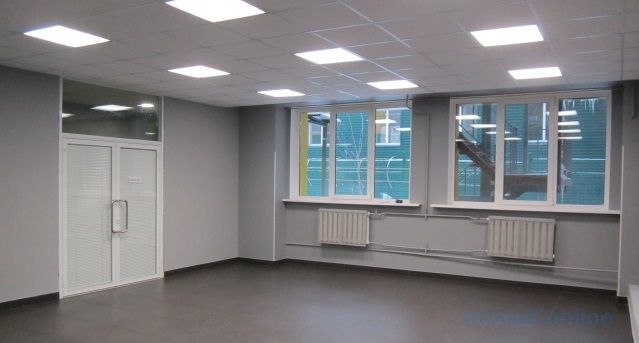
Regulatory regulation of non-residential premises
The description of real estate funds contains the following regulations:
- Housing Code of the Russian Federation. The document does not contain a direct indication of the status of this type of object as commercial. However, the act contains a definition of residential premises, which means apartments, houses and other isolated units suitable for permanent or temporary residence. Accordingly, objects in which it is impossible to register citizens at the place of residence are considered “non-residential”. There is no precise definition in the law for such infrastructure facilities.
- Federal Law No. 122 “On registration of rights to real estate and transactions with it.” This law provides the exact characteristics of non-residential properties - this is a premises as part of buildings and structures, with a separate entrance, meeting sanitary and technical standards, and registered in the state register as part of a non-residential fund.
- Criminal Code of the Russian Federation. Gives the concept of non-residential premises as a building or structure located in any form of ownership - private, municipal or state, the purpose of which is the temporary accommodation of people, storage of material assets for official or production purposes.
In addition to premises, non-residential buildings are also allocated. They are real estate objects that serve to house production workshops and large companies with several departments. Their characteristic feature is the ban on registration and residence of people on both a temporary and permanent basis.
Signs of non-residential premises
The legislator gives the following characteristics of the non-residential real estate fund:
- the presence of a separate entrance with access to the street or to service premises;
- lack of registration on the square;
- identifying an object as non-residential, identifying it as a separate unit as part of a structural element in a multi-story building;
- a strong connection between the premises and the land on which the building is located is required;
- registration of isolated square meters as non-residential when entering the relevant data into the Rosreestr database.
According to the requirements of Russian legislation, a clear division of areas into those suitable for living and those intended for conducting commercial activities or for housing employees has been established. It is strictly prohibited to use the premises for living if the documents indicate the status as non-residential. This may result in bringing the responsible persons to administrative liability.
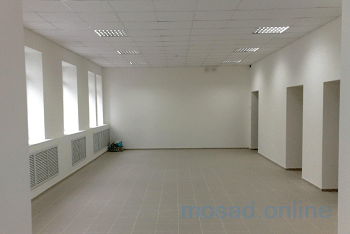 To carry out commercial activities, you must submit an appropriate application and documents confirming ownership of the premises to the authorized government bodies. When satisfactory technical condition is established, registration of the new status of the real estate unit in Rosreestr is required. Such actions are carried out only if it is permissible to transfer residential premises to a commercial property.
To carry out commercial activities, you must submit an appropriate application and documents confirming ownership of the premises to the authorized government bodies. When satisfactory technical condition is established, registration of the new status of the real estate unit in Rosreestr is required. Such actions are carried out only if it is permissible to transfer residential premises to a commercial property.
Obligations of owners of non-residential premises
The status of the area as commercial or office is established, including when separating units from a multi-apartment residential building, subject to the following requirements of property owners:
- Use exclusively for the purposes provided for by civil law - for the placement of shops, pharmacies, and other infrastructure facilities.
- Carrying out activities that do not contradict the norms of the current law, do not violate the rights and legitimate interests of other citizens and companies, and do not harm their property, both owners and lessors and tenants of property.
- Maintaining facilities in normal sanitary and technical condition, which does not pose a threat to the environment and does not lead to pollution.
- Conducting work in compliance with fire safety rules.
- Closing of the premises after 23-00 in accordance with the requirements for silence and order.
- Carry out repair work in compliance with the rights and legitimate interests of residents in accordance with the conditions specified in regional regulations.
- Install meters to monitor consumption and pay for housing and communal services.
- To take part in decisions made by the general meeting of owners of an apartment building, which includes non-residential premises, to finance or carry out on their own the improvement of the local area related to non-residential premises.
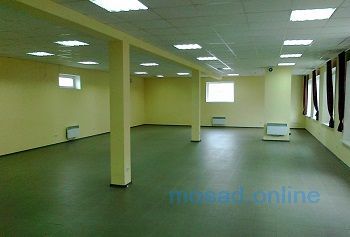 The grounds for transferring residential areas to a non-profit fund are listed in Article 22 of the Housing Code of the Russian Federation. These include the absence of claims to the area by third parties, including citizens who have rights to inherit or receive property under other civil transactions, and the registration of all residents at the time of registration of property. Such actions are possible only if the area is not included in the residential area as a structural unit and is listed as capital, that is, it has a solid base in the form of a foundation, floor and walls, and an isolated exit.
The grounds for transferring residential areas to a non-profit fund are listed in Article 22 of the Housing Code of the Russian Federation. These include the absence of claims to the area by third parties, including citizens who have rights to inherit or receive property under other civil transactions, and the registration of all residents at the time of registration of property. Such actions are possible only if the area is not included in the residential area as a structural unit and is listed as capital, that is, it has a solid base in the form of a foundation, floor and walls, and an isolated exit.
It is allowed to transfer premises to non-residential premises under the following conditions:
- There is no isolated entrance if the area of the real estate unit is more than 100 sq.m.
- The building where the object is located is in danger of collapse, is classified as unsafe or dilapidated, if it is recognized as such on the basis of a resolution of regional authorities.
- The premises must be located on the first floor of a residential apartment building, which meets technical and sanitary safety requirements.
- It is possible to transfer only the entire isolated room as a whole; individual rooms, for example, in an apartment or communal housing, are not possible.
- There must be no encumbrances on the property if documents are submitted for transfer to a non-residential property when concluding a commercial lease agreement, arrest by order of a court or other authorities, in a pledge or mortgage.
Find out who owns a non-residential premises, plot, house or garage in three steps:
Non-residential premises in houses for common use
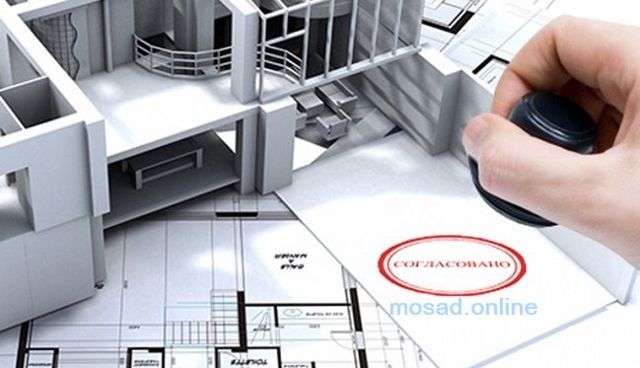
Commercial premises used by owners for business or official purposes should be distinguished from areas that belong to common areas in apartment buildings.
These include elevators, technical areas, basements and attics, stairs, entrances, wheelchairs, utility units and other areas in respect of which such status has been established based on a decision of the owners of an apartment building or shared ownership, cooperative.
Such premises, even if they are created for the functioning of the entire building in common ownership, cannot be registered as non-residential. It is prohibited to operate them as separate areas for commercial activities.
Exceptional cases include the placement of services that are responsible for the maintenance and servicing of the house - technical stations, elevator rooms, use for storing work equipment for home repairs, cleaning the local area, etc.
The placement of a non-residential property should not create obstacles to the use of common building equipment in the form of electricity meters, water supply, landscaping and cleaning of the territory, and other technical means.
New payment scheme for housing and communal services directly from RSO
Classification of non-residential premises
In practice, it is customary to divide areas according to their intended purpose. These include:
- Medical - as part of clinics and dispensaries, ambulance stations and hospitals, outpatient centers. They are secured by the right of operational management for the placement of state and municipal institutions, property - in the case of private ownership of a company or citizens.
- Entertainment - for placing cinemas, clubs, parks.
- Utilities - to supply administrative units with gas, heat, water and electricity.
- Educational - for universities and schools, preschool institutions created on a commercial or private basis.
- Production - for the arrangement of warehouses, workshops, laboratories in various fields of industry, etc.
The legislation establishes a clear list of grounds for qualifying a property as non-residential. It is possible to transfer a fund used for the residence of citizens to a commercial or official one, however, subject to a number of conditions specified in regulations.
Simplified procedure for receiving subsidies for housing and communal services

Non-residential premises: what is it, is it possible to turn it into residential premises?
The concept of such a property as non-residential premises is not only quite common in civil circulation, but also decisively prevails in the field of rental real estate.
However, people often have questions about what constitutes non-residential premises. This gives rise to various problems associated with a lack of understanding of the differences between residential and non-residential premises and the purposes of their use.
Dear readers! Our articles talk about typical ways to resolve legal issues, but each case is unique.
If you want to find out how to solve your particular problem, please use the online consultant form on the right or call +7 (499) 450-39-61. It's fast and free!
Definition of non-residential premises: what is it?
Non-residential premises, acting as an independent object of civil legal relations and the subject of an agreement (purchase and sale, lease), are primarily distinguished from buildings and structures.
This real estate is not represented by separate buildings or structures, but is allocated in the form of independent and volumetric-spatial parts. In turn, such parts are part of buildings and structures with ceilings.
What is non-residential premises? First of all, this is a place not suitable for permanent residence of people. It is tied to the site and isolated from the rest of the building by a separate entrance, but at the same time has the right to be located in both residential and non-residential real estate.
Reference. Premises that are not intended for housing and are part of a building have their own legal regime, which often differs from the regime of the real estate itself. The mode depends on the purpose of the room.
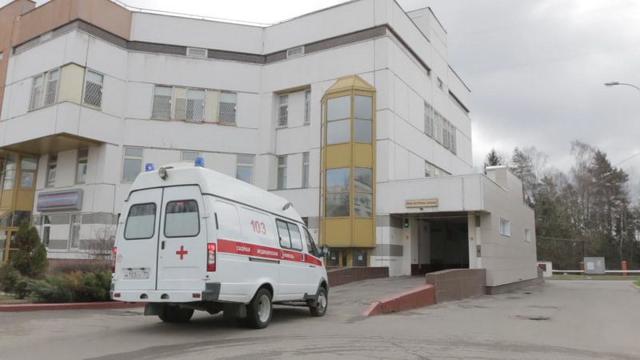
Legal regime of non-residential premises
The legal regime of non-residential real estate is a special order of legal regulation that affects civil legal relations. His research is necessary to correctly interpret the concept of non-residential premises.
The general rules for the regime of a building unsuitable for habitation include the following:
- execution of a transaction - Articles 550-551, 554 of the Civil Code of the Russian Federation;
- state registration of rights to such premises - Article 131 of the Civil Code of the Russian Federation;
- the procedure for foreclosure with a pledge is Article 349 of the Civil Code of the Russian Federation;
- the statute of limitations from the date of acquisition is Article 234 of the Civil Code of the Russian Federation;
- jurisdiction at the location of the property - Article 30 of the Code of Civil Procedure of the Russian Federation.
At the same time, there are also special rules that emphasize the exclusivity of the type of premises in question. These rules are considered:
- compliance with the norms of the Housing Code of the Russian Federation, which equalizes the rights and obligations of the owners of all premises in relation to the management of an apartment building and its common property;
- alienation of auxiliary parts of an apartment building together with the entire house or its main premises;
- transfer of non-residential premises to residential ones and vice versa, which becomes the basis for a change in the legal regime;
- intended use;
- features of transactions.
What applies to non-residential real estate
Such places usually include various kinds of cafes (from coffee shops to restaurants), shops, shopping centers, offices, etc. - everything that is in one way or another connected with the provision of services. Each such place must have an owner who will issue a certificate of ownership for it.
As mentioned earlier, many rooms of this type are located in apartment buildings: for example, on the ground floor or in the basement. They are also located in completely non-residential buildings, which were created specifically for various organizations.
It is a common belief that non-residential buildings are represented only by entrances, elevators, attics, basements and other similar places. Often these include buildings in emergency condition. However, the situation is somewhat different.
If you collect all the previously mentioned signs of non-residential premises, you get the following picture:
- This is necessarily real estate that is not intended for people to live in it.
- It is registered on a specific land plot.
- The place is isolated and has special boundaries.
- There is a separate entrance.
- The real estate does not contradict construction, fire and technical standards.
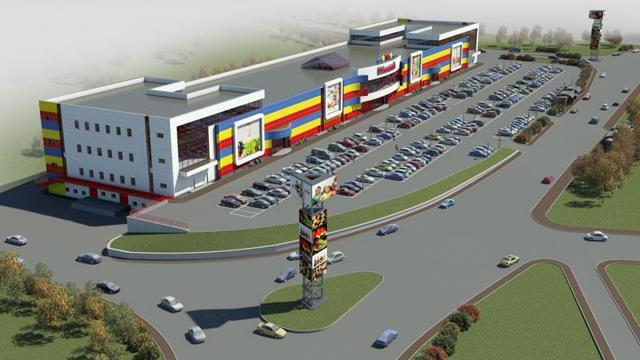
Differences between residential and non-residential premises
The most important difference is the purpose of purpose. If residential premises, as the name suggests, are intended for living in them, then non-residential premises are intended for various commercial (and not only) purposes.
The production premises have a separate entrance.
The residential premises belong to a separate owner. There you have the right to obtain a residence permit, which cannot be done in places not intended for housing.
In cases where we are talking about residential properties in the form of an apartment, part of it or part of a residential building, as well as in all cases - about non-residential premises, such places are represented as a conditional object of real estate.
On the one hand, this is an independent property, on the other hand, it is part of another property. However, it does not have a direct connection with the land, that is, it is not registered on it separately from the entire building.
The use of non-residential space in a building is unthinkable without the simultaneous use of the building itself and, in essence, is associated with its use.
Important. Despite the fact that residential and non-residential objects have obvious differences, they act as real estate and the subject of transactions with it only in their completed and commissioned form. In this case, it is necessary to have technical documentation for the entire building.
What are non-residential properties used for?
Non-residential premises are used for various commercial and public purposes. They house organizations offering and providing a variety of services.
The purpose of such places is directly related to their classification. According to the functional isolation of non-residential places, they are distinguished:
- The main ones, for example, are the halls and offices in which the activities of the enterprise are carried out.
- Auxiliary (service) premises: corridors, vestibules, staircases, other common areas.
The following premises are created according to the actual purpose or purpose of use:
- for trade (shops, shopping centers);
- for production purposes;
- for a warehouse;
- to maintain communication through branches;
- for places of consumer services;
- equipped as a garage;
- for administrative purposes (government institutions);
- for the placement of catering establishments;
- related to educational and scientific activities;
- for medical and sanitary purposes (hospitals);
- for public utilities (supply of water, gas, electricity);
- for services in household areas (ateliers, dry cleaners, repair shops);
- cultural, entertainment and development places (exhibition halls).
Each such category is detailed into narrower objects, which is prescribed at the discretion of the parties.
The intended purpose of the rented non-residential premises is determined by the conditions of use of the transferred property and the parties to the transaction.
What a non-residential place is suitable for is determined only by the parties to the transaction. The above objectives are indicated when drawing up the lease agreement.
Note. According to Article 615 of the Civil Code of the Russian Federation “Use of leased property,” the property is used in accordance with the terms of the agreement or its purpose.
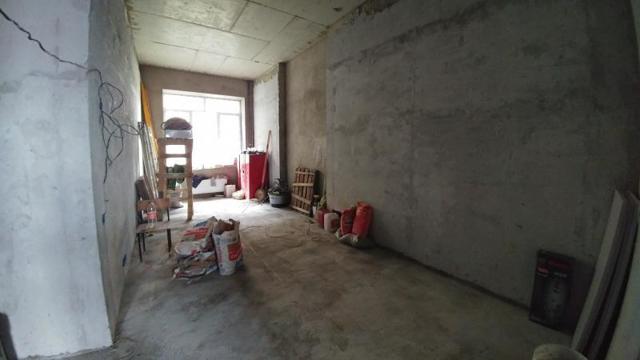
Is it possible to convert non-residential premises into residential premises?
This is a question that owners often ask when they want to redevelop their existing property for the place in which they plan to live. Also, people who have purchased a residential property sometimes think about turning it into an area for carrying out their activities.
Let's deal with the first situation. You have the right to convert non-residential property into residential property. But to do this, you meet a number of conditions:
- As the owner of the premises (tenants are not allowed), you draw up an application to change the status of the property. If there are several owners, then written consent of all parties is required.
- Make sure there are no debts on utility bills.
- The property must not have any encumbrances, for example, be pledged.
- Everything complies with existing safety standards and has connections to all utilities.
- When transferring from one type to another, no actions are taken that bring danger to residents of nearby residential premises.
- Instead of a separate entrance, free access through a common entrance is required.
To complete such a process, you will need a redevelopment plan. The owner also collects all documents for the premises (technical passport, floor plan and redevelopment scheme).
Along with the application, the owner submits them to the architectural department of the city administration. The review procedure takes about 45 days.
If you have given consent, repairs begin. After completion of the work, an inspection is carried out by specialists from the technical inventory bureau.
Then you receive new documents for the premises and apply with them to Rosreestr or MFC to obtain a certificate of title to the new property.
Features of transactions related to non-residential premises
Transactions related to non-residential real estate are similar to ordinary ones, but they have a number of nuances.
When registering non-residential buildings, owners receive certain rights to them, adhering to the conditions specified in the contract. Registration is mandatory because it gives the right to legally use the place for commercial or public purposes.
The contract is considered concluded only from the moment of registration. All obligations regarding the transfer of objects under the purchase and sale agreement are also fulfilled. This is officially recorded in legal documents.
Important. The seller of the property has the right of ownership to it - a necessary condition for concluding a transaction.
As a rule, the seller notifies the buyer about the condition of the non-residential premises and the possible costs of correcting its deficiencies. Information about the rights of third parties to real estate is also not hidden when completing a transaction.
Often, it is not important for the parties for what purposes the premises will be rented, the main thing is that it is not intended for living. Under such conditions, the contract briefly states: “Non-residential premises for rent.”
The parties indicate the purpose of use depending on the classification (administrative, commercial, industrial premises).
Conclusion
While residential properties are intended exclusively for citizens to live in, non-residential properties have a broader application.
Non-residential premises in multi-apartment buildings are usually represented by cafes, shops, offices and other objects that meet this status.
They have owners, and a certificate of ownership is required to be issued to them.
Having an understanding of what constitutes a premises not intended for residential use, you will not only protect yourself from legal consequences, but also easily distinguish it from a residential one.
Didn't find the answer to your question?
Find out how to solve exactly your problem - call right now:
+7 (499) 450-39-61
It's fast and free!
What is non-residential premises: definition, characteristics and examples of real estate objects
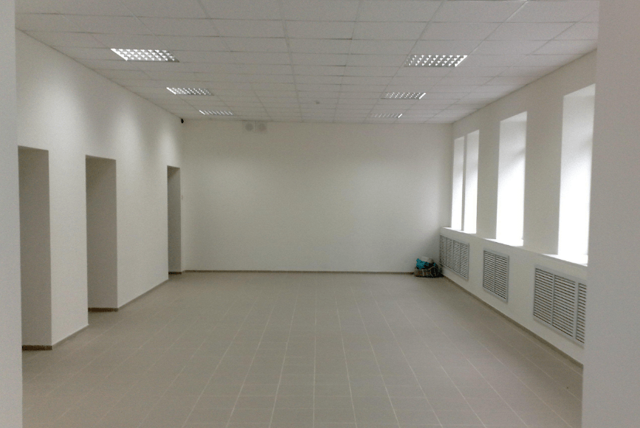
- In the commercial real estate market, the concept of non-residential premises is often encountered.
- Let's find out what it means, how it differs from housing stock, what features it has and what such real estate can be used for.
- We will also find out what requirements it must meet and what the law says about this.
Dear readers! Our articles talk about typical ways to resolve legal issues, but each case is unique.
If you want to find out how to solve your particular problem, please contact the online consultant form on the right or call +7 (499) 938-51-36. It's fast and free!
Hide content
Non-residential real estate - what is it?
There is no precise definition of this concept in the legislation. But in practice, it is generally accepted that non-residential premises are not intended for permanent residence . But this does not apply to him:
- Residential premises recognized as unsafe.
- Common property of residents of an apartment building (for example, an elevator, stairs, attic, entrance, basement).
It is part of the building. In some cases, a certain building may have one room, then they coincide. Non-residential premises can be located in residential buildings (intended to be lived in) or completely non-residential.
Important! If certain conditions are met, the housing stock can be converted to non-residential. The reverse transition is also possible, but it is even more difficult.
The Civil and Housing Codes, however, contain important information about non-residential premises. For example, these are its signs. Their list was included in Law No. 122-FZ of July 21, 1997. Questions about the possibility of transferring to this category from residential are described in Article 22 of the Housing Code.
Signs
The main features include the following:
- Such an object is real estate.
- Not intended for people to live in.
- It is isolated, that is, separate. The boundaries of the room are building structures, that is, walls, floors, ceilings, etc.
- There must be a separate entrance.
- The premises must be registered on a specific site.
- It must be impossible to move it.
- It must comply with building, fire and technical standards.
Such real estate is divided into:
- main;
- and auxiliary.
The first can be used separately, and the second is needed for maintenance and use of other premises. For example, a school office is the main room, and the corridor is an auxiliary room.
also a division according to intended purpose . In accordance with it, premises can be:
- Educational (these include buildings of kindergartens, schools, universities, etc.).
- Healthcare (for example, hospitals, clinics, emergency rooms).
- Industrial.
- Administrative.
- Utilities (gas, water, electricity, heat supply).
- Catering.
- Household services (these include studios, laundries, dry cleaners, repair shops and others).
- Trade.
- Relaxation and entertainment.
- Post offices (post offices).
- Warehouse.
- Creative (workshops and exhibition halls).
Property requirements
The property must meet the following requirements:
- There must be a separate entrance or the ability to arrange one.
- There are certain requirements for the location: on the ground floor or above a non-residential premises.
- It should not be used for permanent residence or interfere with the overall architectural appearance of the house.
- There are no third party rights or any encumbrances.
- Also, it should not form part of the living space. For example, you cannot transfer part of an apartment or room in a communal apartment.
Attention! If such real estate can be used only with the annexation of part of the common space of an apartment building, the consent of the residents will be required. To obtain it, you will need to hold a general meeting.
Permission will also be required to organize a separate entrance if this requires changing the enclosing and/or supporting structures.
Further use must comply with the following requirements :
- sanitary and hygienic;
- fire protection;
- environmental.
In particular, if non-residential premises are located in a residential building, the following cannot be placed in it :
- Enterprises that pollute the territory and air (physically and chemically).
- Violating living conditions.
- Some treatment and preventive organizations (helping with drug and alcohol addiction, infectious patients).
- Industrial enterprises.
- Stores selling chemical, explosive or other dangerous goods.
- Dry cleaners.
- Public toilets.
- Institutions operating later than 11 pm (or, moreover, around the clock).
Differences from premises for permanent residence
An additional feature will be the presence (or absence) of a separate entrance. The location on the floor in an apartment building is also important.
Examples of what belongs to the residential stock and what to non-residential. The residential stock includes :
- apartments of an apartment building, including communal ones;
- separate houses intended for permanent residence;
- dormitories.
Classified as non-residential:
- the shops;
- dry cleaners;
- Beauty Salons;
- hotels (since they are intended for temporary residence, not permanent);
- apartments.
So, non-residential premises include separate premises not intended for living. They can be of different types according to their purpose and used for different purposes, and must also meet a number of requirements.
Didn't find the answer to your question? Find out how to solve exactly your problem - call right now:
+7 (499) 938-51-36 (Moscow)
It's fast and free!
What is non-residential real estate and what are its features?

In the article, our experts will talk in detail about commercial and industrial real estate, as well as the ownership of various objects, the rules of their ownership and use.
Dear readers! Our articles talk about typical ways to resolve legal issues, but each case is unique.
If you want to find out how to solve your particular problem, please use the online consultant form on the right or call +7 (499) 938-46-18. It's fast and free!
Show content
What is real estate?
According to Article 130 of the Civil Code of the Russian Federation, real estate refers to those things that are characterized by the following:
- These are either land plots, or the object is so closely connected with them that moving without disproportionate damage is, as a rule, impossible.
- They are subject to state registration and accounting.
What are the objects of the fund?
Real estate is divided into groups:
- Housing stock - this concept includes premises intended for permanent residence of people and meeting the requirements set out in the Housing Code of the Russian Federation and other documents.
- Non-residential properties are those that need to be used for other purposes.
In turn, non-residential real estate can be divided into several categories. The main ones are industrial and commercial real estate.
Industrial
This term refers to objects that are intended to house production facilities . Industrial real estate is intended either for the production of material assets or to support this production.
You can learn more about industrial real estate here.
a commercial
This is real estate used to generate profit in a manner not related to production. This primarily includes office centers, shops, restaurants, etc.
You can read more about commercial real estate here.
The difference between a room, a building and a structure
Differences
What a building, structures, premises are is specified in the legislation and therefore, on the basis of Part 2 of Article 2 of the Federal Law “Technical Regulations on the Safety of Buildings and Structures”, they can be defined:
- A building is a real estate object that is a capital structure and contains separate internal spaces of various types. It may include both residential and non-residential premises.
- A room is a structurally separate part of a building that has a specific purpose.
- A structure is a constructed object that is a system that includes load-bearing and, if necessary, enclosing building structures. Structures are always only non-residential.
Kinds
Non-residential premises can be classified as follows:
- By type of use: office, retail, universal, warehouse, industrial, etc.
- By functional purpose: main and auxiliary.
Reference! Premises of different types are often subject to different requirements approved by SanPiN, GOSTs, etc.
You can learn more about the types of non-residential premises here.
The main volume of MKDs is occupied by residential apartments. However, it always contains premises that are not residential:
You can read about non-residential premises in an apartment building here, and here we talked about the difference between residential and non-residential premises.
Buildings on country and garden plots
Premises located on the plots of dacha or garden societies have a special status. Here the question of what is included and whether buildings and premises in them are classified as residential or non-residential is closely related to the category to which land plots belong.
Attention! If the land does not belong to a populated area, all structures on it are usually considered only as non-residential. In addition, the construction of non-residential objects - buildings for utility purposes - is allowed on dacha and garden plots.
You can learn more about non-residential premises in a gardening partnership here.
Ownership of buildings
Like any other objects, non-residential real estate can be owned by:
- state (both federal and regional);
- municipal;
- private.
Moreover, each object can be either individual or shared ownership. Moreover, non-residential real estate can be not only in common shared ownership, but also in common joint ownership (with spouses or members of a peasant farm).
You can read more about ownership of non-residential buildings and premises in this article.
Rules of use and ownership
The owner who owns non-residential premises must comply with the rules established by law. Briefly they boil down to the following:
- Use the facility in accordance with its purpose, GOST and SanPiN standards.
- Do not violate the rights and interests of other citizens when using them.
- Make all required payments on time - from paying property taxes to utility bills.
Read more about the rules for using and owning non-residential real estate here.
In premises classified as non-residential, it is impossible to obtain either permanent or temporary registration. If it is necessary to register a person in a non-residential premises, the object must be transferred to the housing stock in the manner prescribed by Article 23 of the Housing Code of the Russian Federation:
- The owner of the premises submits an application and accompanying documents to the municipal authority.
- Officials review the submitted package of documents and, if necessary, send a commission to inspect the facility.
- Within 45 days from the date of filing the application, the local authority makes a decision on the transfer or refusal to transfer the premises to the housing stock. The refusal can be appealed in court.
The transfer of residential premises to non-residential property also occurs (you can read more about the transfer of residential real estate to non-residential property here).
You can additionally learn about the purpose of using non-residential premises and the procedure for changing it here, and here we told you whether it is possible to register in non-residential premises.
Transactions and taxation
Like any other object, real estate non-residential property can be the subject of transactions. The most common of them are:
- purchase and sale;
- rent;
- collateral (including mortgage);
- loan (transfer by the owner for free use).
The parties to the transaction can be legal entities or individual entrepreneurs, as well as ordinary people.
Important! Any transfer of ownership, as well as serious encumbrances (such as a lease for a period of one year or more) must be registered in the Unified State Register of Real Estate.
According to the Tax Code of the Russian Federation, non-residential real estate can be subject to the following taxes:
- Property tax. Since 2015, it has been calculated not by inventory value, but by cadastral value, which is close to the market value.
- Income tax (NDFL).
- Income tax for organizations and individual entrepreneurs.
You can additionally read about transactions with non-residential real estate here, and here we talked about the taxation of non-residential premises.
Inspection, examination, features of depreciation and accounting of real estate
The expert must determine whether the object complies with building codes and is suitable for use. In addition, an expert assessment of the object can be carried out to determine its value.
Based on the results of the examination, decisions can be made about what the residual value of the premises is - and, therefore, how it should be taken into account by the company’s accounting department. Non-residential real estate can be classified as fixed assets. To do this you need the following:
- Ownership of the object (unless otherwise provided by the Tax Code of the Russian Federation).
- Profit from use.
- The period of use is more than a year.
- The cost of the object is more than 10 thousand rubles.
Reference! Fixed assets, in turn, are classified as depreciable assets. This means that in each accounting period the payer has the right to write off part of the profit as depreciation.
In this case, it is necessary to be guided by Article 258 of the Tax Code of the Russian Federation and the classification of objects by depreciation groups established by the Government of the Russian Federation. Read more about determining the depreciation group of non-residential premises in this material.
You can learn more about the inspection procedure for non-residential buildings here.
Redevelopment and reconstruction of buildings
If it is necessary to change the structure of non-residential premises, you can carry out redevelopment, reconstruction or reconstruction. The difference between them is as follows:
- Reconstruction is a change in the technical properties of a room without changing its plan, as reflected in official documents.
- Redevelopment - work inside the premises that affects its officially approved plan and associated with the transfer or elimination of walls. Redevelopment also includes dividing the property into two or more new premises (read more about the procedure for dividing non-residential premises here).
- Redevelopment is a change in utility networks (gas, electricity and heat supply). Redevelopment can be related to redevelopment (for example, if a non-residential premises has a shower and toilet, previously combined, but now separated by the will of the owner), but it can also be separate operation (for example, if a new stall is installed in an existing shower room, but the walls are not moved).
Redevelopment and reconstruction require approval from supervisory authorities.
We invite you to read more about the redevelopment, reconstruction and reconstruction of non-residential buildings in this article.
You can obtain information in the following ways:
You can read more about the cadastral value of non-residential premises here.
Cadastral passport
To determine the main characteristics of non-residential real estate, a cadastral passport is required. It should be taken into account that since 2017, the contents of the cadastral passport have been included in the extract from the Unified State Register of Real Estate, therefore these documents are practically not issued separately.
In order to obtain a cadastral passport, the owner must contact the State Register and register the premises with the cadastral register. From this moment on, cadastral information will be included in the Unified State Register of Real Estate, from where it can later be obtained by extract.
Technical plan
In order to register the premises with the cadastral register, a technical plan is required. This is a document that records the main parameters of the object (area, device, etc.). The plan consists of two parts:
- Graphic - the actual drawing showing the plan of the object.
- Descriptive – containing information about the characteristics of a room or building.
The technical plan is carried out by BTI specialists.
You can read in more detail about the technical plan for non-residential premises in this article, and here you will learn how the number of non-residential premises is assigned during cadastral registration.
Real estate non-residential property is an object that has its own characteristics that must be taken into account in legal relations. Specifics must be taken into account both in transactions and in relations with state and municipal authorities.
Didn't find the answer to your question? Find out how to solve exactly your problem - call right now:
+7 (499) 938-46-18 (Moscow)
It's fast and free!
Non-residential premises: legal framework for the issue and its features
With the rise in the cost of rent and commercial real estate, the practice of allocating non-residential premises within residential complexes has become widespread. As a rule, the first and ground floors of high-rise buildings are now being bought up for retail businesses, office space, cafes, hairdressers and beauty salons.
Within the framework of sanitary standards, the placement of public institutions should be provided for at the stage of construction of buildings, but this rule is not always observed. Legal entities simply buy apartments on the first floors, organize a separate entrance and start operating their businesses. The latter is not a serious violation of the law, the main thing is that the premises are given non-residential status.
Regulatory framework
The key document regulating the transfer of residential to non-residential premises is the Housing Code, as well as a number of other regulations.
The specificity of this status of immovable objects requires the need to refer to the definitions given by the legislator. Thus, according to the Housing Code, there is no definition of the status of “non-residential premises” in its pure form. The legislator limited himself to only presenting a formulated definition of residential premises.
The latter is characterized as a self-contained unit, which is real estate that complies with sanitary standards and is suitable for habitation. Based on this, we can formulate a definition of the opposite meaning: non-residential premises - real estate unsuitable for habitation.
There is also a more expanded formulation in the legal literature. It is given in 122 Federal Law, which regulates the registration of transactions with real estate, where the following characteristic is given to non-residential premises - an object as part of buildings and other structures.
Within the legal literature, there are many definitions of this concept.
One of these is the following characteristic - this is a space limited by a three-dimensional contour with a separate entrance.
The last characteristic assigns to the user of such an object the right to carry out its legal registration and formalize ownership, as well as the possibility of use on lease and rental terms.
Thus, a non-residential premises in an apartment building is an independent unit that has a separate entrance, meets plumbing requirements and is transferred, in accordance with the requirements of civil legislation, to non-residential status.
Signs of non-residential premises
The legislator also defines a set of characteristics of non-residential premises in an apartment building:
- The presence of a separate entrance from the street side, the window opening is often re-equipped, and the door from the entrance is blocked.
- All residents must be discharged.
- There are no claims or rights to the premises from other persons.
- The object is not separated from part of the residential premises and is not its component element; for example, it is impossible to allocate one of the rooms of the apartment into non-residential premises.
If the space corresponds to these characteristics, it is allowed to transfer it from residential to non-residential.
Basic requirements for non-residential premises in apartment buildings
The allocation of apartment buildings from residential units for use for commercial and other purposes in accordance with current civil regulations is not a violation of the rights of owners and tenants, but imposes a number of obligations on the owners of non-residential premises.
Thus, the legislator prohibits:
- Conducting activities within such premises that create a threat and cause environmental pollution, as well as violating sanitary standards.
- Conduct activities that violate fire safety and pose a threat to the building as a whole and to its occupants.
- Place objects above or below other residential premises.
- Carry out work after 23 hours.
In addition, along with the owners of apartments, their owners are obliged to install metering devices and pay for housing and communal services, as well as contribute funds for the improvement of the local area.
Non-residential premises in public apartment buildings
Apartment buildings contain non-residential premises intended for common use. These include:
- Entrances.
- Flights of stairs.
- Elevators and other technical premises.
- Wheelchairs.
- Basement and attic spaces.
- Utility premises.
These premises are intended to ensure the functioning of the apartment building as a whole. Their transfer to non-residential premises is a priori impossible; in addition, their use for commercial purposes is prohibited.
The exception is cases when the work of technical services of management companies is organized within the basement premises, for example, engineering and technical services are located in utility rooms and work equipment is stored.
Features of non-residential buildings
Along with the term “non-residential premises” the concept “non-residential building” is used. The latter term applies to free-standing structures.
In practice, residential buildings can also be converted to non-residential status.
Commercial organizations or developers often purchase housing from the owners of low-rise apartment buildings or provide equivalent housing, after which they transfer them to non-residential buildings.
In the future, such premises are rented out or the work of individual companies and departments is organized within them. By the way, municipal authorities often act this way. In general, non-residential buildings are detached real estate objects used to house commercial and industrial enterprises that are not suitable for human habitation.







